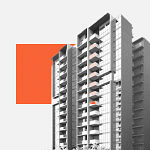[SINGAPORE] Could some new luxury low-rise apartments or landed homes be coming up soon in prime District 10 near the Singapore Botanic Gardens? Such private homes are likely to be well-received by buyers as they will sit in a desirable established residential enclave.
The recent announcement of the land-swop agreement between the Singapore government and the Regent of Johor (ROJ) Tunku Ismail Sultan Ibrahim paves the way for the ROJ to develop land in the Holland Road area.
The land swop involves the Johor royal exchanging a 13 hectare (ha) site (Plot C, in map), located closer to the Singapore Botanic Gardens, with the government for an 8.5 ha site (Plot A) that belongs to the state.
Tunku Ismail will continue to own an 8.1 ha site (Plot B) which sits in between the said two sites. The Johor royal family has owned the freehold plots B and C for generations.

Bound by Holland Road and Tyersall Avenue, the three land plots have a combined area of about 29.6 ha or 3.2 million square feet. Plots A and C have a comparable value.
After the land swop, the ROJ may develop plots A and B, which are suitable for low-rise and low-density residential uses. Meanwhile, the government will keep Plot C undeveloped initially.
A NEWSLETTER FOR YOU

Tuesday, 12 pm
Property Insights
Get an exclusive analysis of real estate and property news in Singapore and beyond.
The land-swop deal appears to be a win-win situation for the government and the ROJ. Perhaps, the government will, in the future, use Plot C to expand the Singapore Botanic Gardens, which is a Unesco World Heritage site.
And the ROJ stands to make sizeable financial gains from developing homes for sale on plots A and B, although the intensification of land use could draw hefty land betterment charges.
Nonetheless, on reflection, might better uses be found for the 29.6 ha of prime land? Maybe, subject to changes to permitted land use, the land can be used for developments that include public housing, a wellness resort and a private healthcare facility.
Public housing
The Housing and Development Board (HDB) has built eye-catching high-rise HDB developments such as The Pinnacle@Duxton in Tanjong Pagar and SkyVille @ Dawson in Queenstown.
Possibly, the HDB can build new low-rise apartments in the Holland Road area to expand choice in the public housing market, which houses about eight in 10 Singapore residents.
Give HDB residents an opportunity to live in modern low-rise homes near the Singapore Botanic Gardens, thus giving them access to a wonderful green lung and a great place for walking and jogging.
Moreover, building new HDB homes in a location largely dominated by private housing will help broaden the socio-economic profile of the neighbourhood’s residents.
Amid a rapidly ageing population, having HDB flat typologies that cater to the needs of elderly Singaporeans, who may be keen to live near the Singapore Botanic Gardens, could also be introduced in the Holland Road land plots.
Wellness resort
The 29.6 ha of Holland Road area land can also be used to generate good financial returns from developing a wellness resort, private medical facilities and ancillary retail offerings.
Wellness is a major theme in the hospitality sector. And the fight for the lucrative luxury tourist who will spend on premier and differentiated experiences is fierce.
A top-in-class wellness-focused resort that leverages the Singapore Botanic Gardens can be a unique offering, which adds to the Republic’s allure for high-spending leisure tourists as well as visitors to meetings, incentives, conventions, and exhibitions (Mice).
Recently, the Mandai Rainforest Resort by Banyan Tree, which is nestled within the Mandai Wildlife Reserve, opened for operations. Might a similar offering be a useful addition to the nature-centric resorts in urban Singapore?
Being in a tranquil setting near the Singapore Botanic Gardens, and yet close to the prime lifestyle Orchard Road area, could also make the land suitable for private healthcare facilities targeting wealthy Singapore residents and South-east Asians. After all, the wealthy medical consumer is much sought-after by the city-state and regional destinations.
Land is scarce in Singapore. Yet, with forward planning, there can be sufficient land to comfortably cater to the variety of living, work and play needs on this island.
The Urban Redevelopment Authority’s Master Plan, which shows the permissible land use and density for developments in Singapore, will guide the Republic over the next 10 to 15 years. This plan, which is reviewed every five years, helps ensure that there is ample land available to house a growing population, cater to business expansion and so forth.
Placemaking
However, having sufficient land to live, work and play needs to be supplemented by having great spaces. Placemaking helps make cities magnets for talent. And Singapore’s long-term success hinges on whether it can be a great home for talent.
The scale and location of the combined 29.6 ha of land in the Holland Road area near the Singapore Botanic Gardens owned by the government and the Johor regent offer exciting potential to create something useful for the community – innovative and unique, yet financially viable.
The Singapore government and the ROJ should consider seeking ideas from architects and the public on how best to use the said plots A, B and C. They could then consider working together or with other partners to jointly develop the land plots, guided by the principles of community impact, innovation and financial discipline.
Perhaps, a consultation exercise will yield better ideas – than low-rise HDB homes and a wellness resort – for the 29.6 ha of land, which will create social impact and economic value.
Ultimately, may the goal be to create exciting new developments in the Holland Road area land plots that will enhance how Singapore residents live, work and play.


